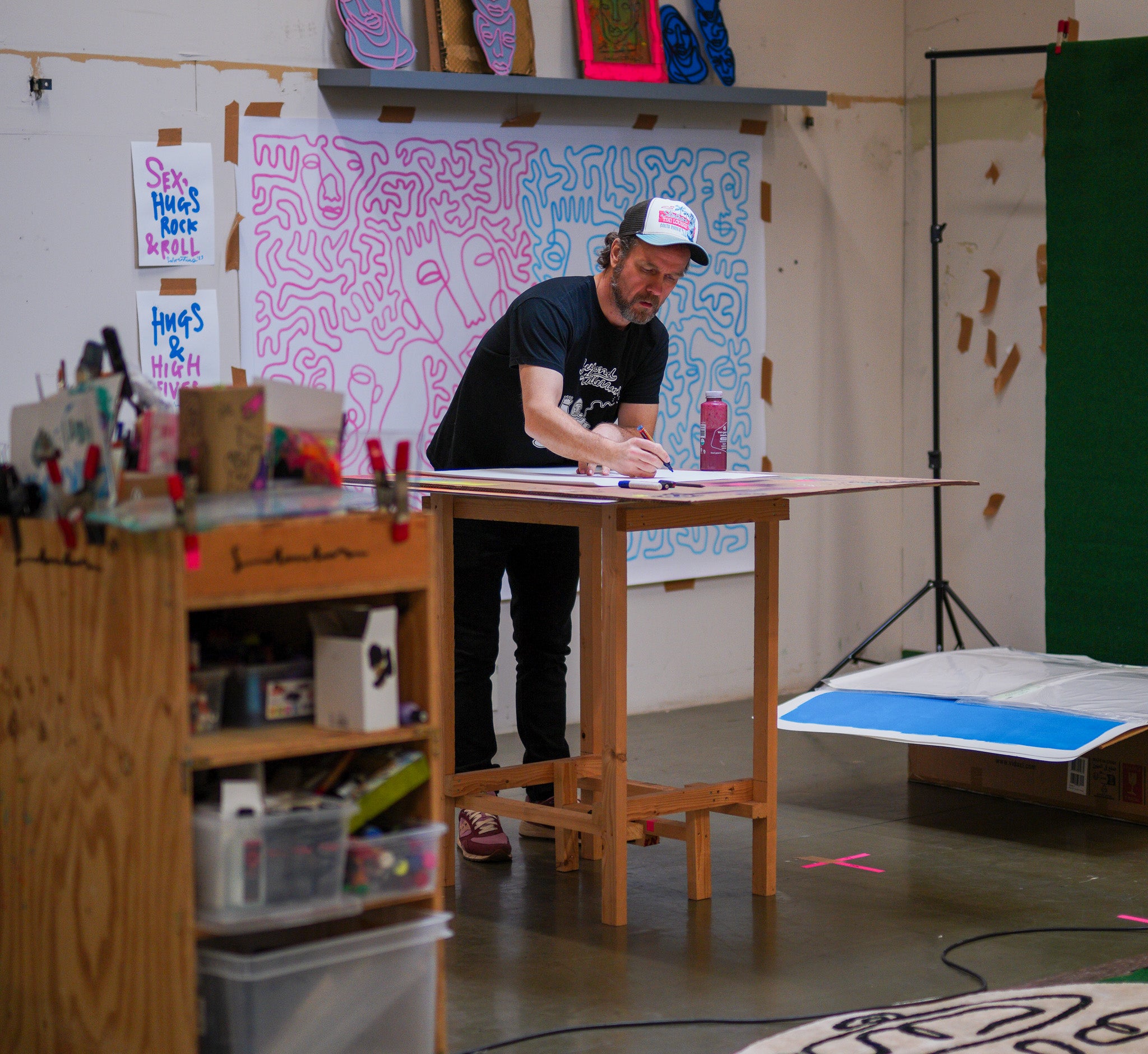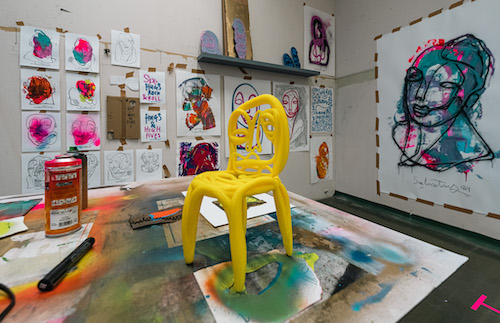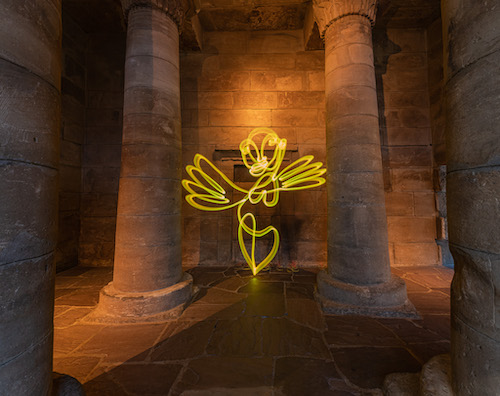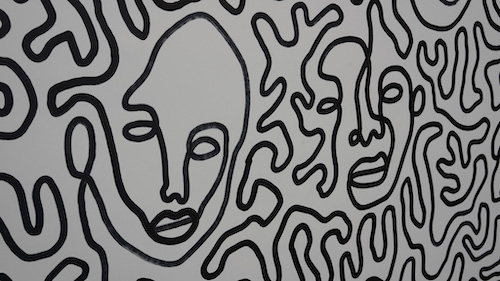Interview ARTTV

Article on ARTtv by Fulden Karayel Okumuş 03/05/2024
The Secret of Capturing Moments in Art: Is it Hidden in Momentalism?
Not a day goes by without us getting lost in the hustle and bustle of life, without experiencing moments of tranquility that fill our hearts with peace. Nowadays, the ability to stay in these 'moments', as everyone frequently mentions, is not as simple as it seems. While struggling with the barriers created by our minds, accessing this simple yet powerful experience is not always easy. So, when was the last time you savored these moments? Perhaps while watching a sunset, maybe when you made eye contact with a baby, or when you got lost in the rhythm of a heartfelt music. Or maybe, when you carefully looked at a piece of art, you’ve started to live at that moment…

Just as we are a part of the universe, we are also part of that big picture that we call as 'moment'. A well-lived moment is where everything is as it should be, where everything is resolved and concluded. When we manage to stay fully in the moment, everything naturally falls into place. It's the same when you're doing something you love. When you're here and now, you connect with your essence. And the works you produce also happen in this contextual presence. For example, you start to capture momentary impressions and emotions from the exterior world and reflect them at that moment into your artwork. That’s called Momentalism. Today, there are many artists who possess the ability to express creativity and freedom of expression naturally and freely. These artists are true pioneers in their fields. One of them is the Dutch artist Niels Kiené as known as Salventius. Salventius creates hand-drawn three dimensional sculptures using VR and 3D printing. His technique is actually about drawing a face with a single continuous line. He uses his signature term One Line Momentalism style. The artist passes a natural, spontaneous feeling to the viewer through his paintings. Since the paintings often carry a vibrant and dynamic energy, colors and forms are used quickly and directly to establish an emotional connection. Depending on the artist's mood and the perception of that moment, the expressions and compositions on the canvas vary and can also change instantly. How about exploring the concept of Momentalism through Salventius' own words right now? We dived deep into this topic in our compelling interview with him. Here we go.

How did your creative journey begin and how has this process evolved?
It was never meant to be a journey. I think it was what I needed to do while I was trying to find my way in the world, and suddenly I was on this track! I still am so glad that I woke up one day and allowed myself to focus on making what I love.

As a creative individual, what is your main motivation, and what is the core of your passion to sustain your art?
I create all my work in the moment, so with no try-out or sketch. This means that my work needs to ‘happen’ within this specific time frame. This creates a momentum and urgency that I like to work with. This ignites the best in me. Seeing the portrait at the end is for me a first time, thats what gets me so excited.

How would you define and describe your created works?
My work or style is called momentalism. The fact that my portraits are made with one line is because this helps me to get more in the moment. Its never been out of ecstatic reason that I use this technique. So it is not just one line drawings. My portraits I prefer to call ‘The Ones, upon a time’ because most of them where created in one moment, with one line in one try.

Why do you particularly prefer to use faces in your work?
With my work I like to explore what it is like to be a human being. When drawing portraits I somehow I feel like I understand people and society more. This results in also understanding more about myself. I love people. And I am so much interested in there thoughts and motives. In my work I like to capture these.

Which tools do you use in your creations, and do these tools motivate you?
My primary tool is time! I think that my work is a time based art. The moment is the time frame that helps me to create my portraits. The materials I choose to make the actual drawing with need to be contributing to creating in the moment. Does it allow to be used within a short period of time? Does it show that it is done on one time? Does it secure that it can’t be reproduced in the exact same way so it shows its uniqueness?

Does any of your works have a unique story behind them?
I wish I could say that all of them have unique stories. In a way this is true but not all stories are known to myself. When I finish a portrait I see the portrait for the first time myself. Sometimes in that last second a story gets to me, explaining the portrait. Sometimes the story of a drawing becomes clear in time.
What advice would you give to young talents to succeed in their creative journeys?
Create something every day. Not every day will be a masterpiece but you will learn to find your style. Don’t try to think of the people that will see your work, just find the joy in creating your work. When doing what you love you will last longer, and it will also show within your work! It is like a hidden layer that people maybe won’t see, but do feel!

Do you support social responsibility projects, and what do you do in this regard?
I do, but not as an artist, but as a human being. I think the beauty of art is that it is not forcing people to believe it is the truth. It only communicates when it resonates with people. Therefore I see my social channels not as something that bring the news, or politics as we know it. My work itself is a search for how to be a good human being. And I hope that this journey contributes to a more social and healthy connection between people.
Is there a specific reason for your focus on facial details in your art, and why do you prefer repeating forms?
When drawing portraits I feel that I understand people more, society more, and myself more. Often I hear that it is difficult to see what gender my drawings have. I see this as a compliment, and it is in line with what I sometimes try to achieve, make a portrait that represents all 8 billion people from our planet, drawn in one perfect imperfect human portrait.

Do you have any favorite colors that you frequently use in your art, and is there a special reason for choosing these colors?
I often use the colours pink and blue. I like their contrast. For me these they represent change. As in what happens in the sky just as the beginning or the end of the day, when the sun is going down or up. In that little time frame you can often see the best blue and pink colours close together in the sky. Leaving the day, to go into the night. Returning to a new horizon, lighting up a new day. One of the best inspiration sources of nature, our skies!

Can you tell us a bit about the Zara x Salventius collection?
I have a video with an interview about the collection. Link you can find here:
https://www.youtube.com/watch?v=N8VOsny9x8k
Where can we check out your artworks?
Most of my work is on Instagram
My available work can be found on my website
www.salventius.com
On YouTube I have some longer making of videos to show the process of creating in the moment


Leave a comment